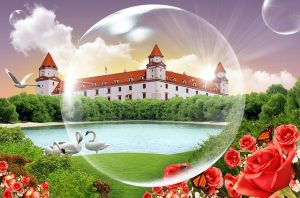Many people ask whether Slovakia is truly a multicultural country. The answer depends on how far back in history you look.
Historical cultural influences – from the Roman empire to the Kingdom of Hungary
Cultural influences on the territory of present-day Slovakia began to form as early as the Roman Empire, from the 1st to the 4th century AD. Roman culture brought architectural gems such as baths, fortresses, and roads, which laid the foundation for infrastructure development. Additionally, the introduction of Christianity began, gradually influencing the spiritual life of the population. The Migration Period, from the 4th to the 6th century, saw the arrival of Germanic tribes like the Goths and Lombards, leaving their mark on Slovakia.
In the 7th century, the unification of Slavic tribes under the leadership of the merchant Samo laid the foundation for the development of Slavic culture. This era culminated in the Great Moravian Empire in the 9th century, when the Cyril-Methodian mission introduced Christianity and a Slavic liturgy. Byzantine cultural influence became most evident with the introduction of Glagolitic script and translations of religious texts. From the 10th to the 16th century, Slovakia was part of the Kingdom of Hungary, where Hungarian influence played an important role in political integration. This period was also known for the development of Gothic and Renaissance architecture, reflected in the construction of cathedrals and castles.
The following era of Habsburg rule in the 16th and 17th centuries shaped Central European politics and supported Catholic reformation. The 18th and 19th centuries saw the rise of Enlightenment ideas and national revival, with figures like Štúr advocating for the linguistic and cultural emancipation of Slovaks. After the Austro-Hungarian period, which promoted industrialization and urbanization, came the era of Czechoslovakia from 1918 to 1992, where shared statehood with the Czechs fostered educational development and socialist realism in art.
Since 1993, after the formation of an independent Slovak Republic, the country has undergone democratization and integration into the European Union and NATO. Currently, domestic culture is influenced by globalization, bringing international trends. History shows that culture in Slovakia was never purely Slovak but has always been shaped by various cultural influences.
Contemporary cultural influences
Today, Slovakia is home to various national minorities. The most notable are Hungarian, Roma, and Czech communities, but there are also Ukrainian, Rusyn, and Polish communities. Particularly in the capital, the Ukrainian language is increasingly heard and is now the second most common language after Slovak.
All these cultural groups bring their customs, traditions, languages, and cuisine to Slovak culture. In Bratislava, as the capital, cultural influences are most prominent, with numerous ethnic restaurants, businesses, festivals, and cultural events.
We are glad to provide you our services.
 +421 948 365 187
+421 948 365 187 info@realdealplus.com
info@realdealplus.com



